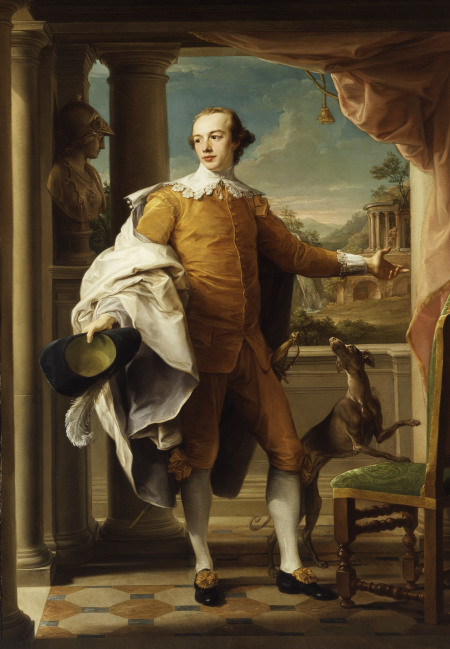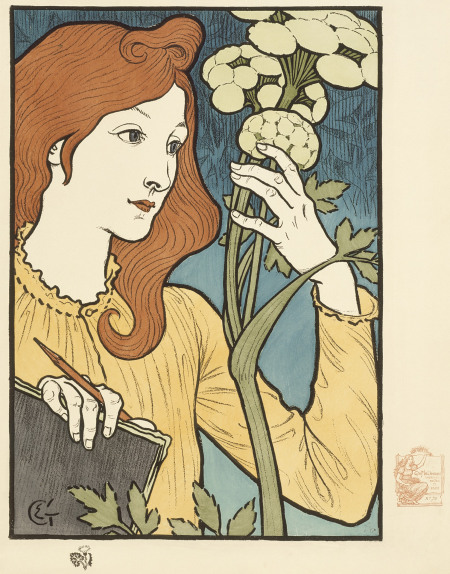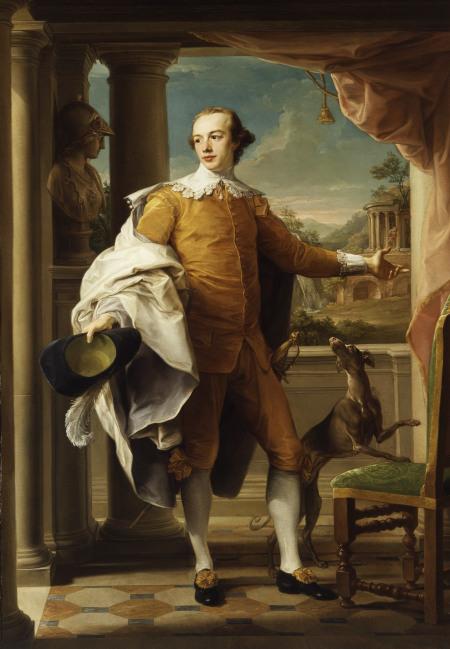For too long, museum websites, like most other websites, have been a one-way street—a vehicle for us to share what we think you may want to know about art and events at LACMA. But since the debut of our new collections website, we don’t have to guess anymore; you can tell us exactly what you want to know, and some of you are doing just that.
 Pompeo Batoni, Portrait of Sir Wyndham Knatchbull Wyndham, 1758-1759, Gift of The Ahmanson Foundation.
Pompeo Batoni, Portrait of Sir Wyndham Knatchbull Wyndham, 1758-1759, Gift of The Ahmanson Foundation.
For example, recently, a visitor (identified online here only as “Microbe”) wanted to know a lot about our Portrait of Sir Wyndham Knatchbull-Wyndham, currently on view on the third floor of the Ahmanson Building, but apparently better-known to Microbe by perusing our website (where this image, like 19,999 others, representing one-fourth of all of the works of art on the site, is regarded as public domain and made available for you to download and use as you see fit).
Microbe wrote:
The portrait is very familiar to a whole host of former children in care at The Caldecott Community school, which occupied for 50 years 'Mersham-le-Hatch' the ancestral Robert Adam-built mansion of the Knatchbull family, UK, where this elegant Batoni portrait was on display in its original dining room niche above an expansive decoratively carved marble fireplace. As one of those 'former familiar children' I note the painting has had a clean, since certain detail wasn't nearly so apparent in my childhood when chancing to gaze up during every mealtime from 'my porridge' at the mannered Georgian stance of Sir Wyndham Knatchbull portrayed, I recall, against a much darkened backdrop of overlaid grime of enumerable decades.
Microbe is correct – museum records verified that indeed, the painting had hung in the historic home. And indeed, our conservation center had cleaned the painting, rendering it far more legible. Microbe’s question prompted my colleagues Robyn Sanford and Monique Abadilla in our registrar’s office to dig up and share this information:
The portrait was painted in 1757, when the young Sir Wyndham was in Rome on his Grand Tour. After his return to England, Sir Wyndham commissioned the design and building of Mersham Hatch, Kent, where the painting hung over the fireplace in the dining room until its sale in 1994. See, Arthur T. Bolton, "Mersham Hatch, Kent, the seat of Lord Brabourne," Country Life, March 26, 1921, pp. 368-375, especially ills. p. 371 and 373.
The portrait sitter was not married and had no heir, so upon his death, his property went to his uncle. This was work purchased by the museum with funding provided by the Ahmanson Foundation in 1994 from Simon C. Dickinson, Ltd. Prior to 1994, the work was held within the Knatchbull family.
So you see, we really do pay attention to these comments and route them through the museum to try to find an answer to your questions. In fact, educator extraordinaire Mary Lenihan in our education department recently fielded another one: an online visitor, captivated by Salon des Cent, a 19th century French print (and another of the 20,000 images on our website available to download and use without restriction), wrote to ask:
Who is this woman? Why do you think she has a pencil and a book? Is she an artist observing the fine details and tonality of this plant for a drawing? Is she a poet about observing the existence of this plant to create metaphors for a poem? Is she a scientist observing the structure of the plant for a research paper?
 Salon des Cent,
Salon des Cent,Eugène Samuel Grasset, France, 1894
Kurt J. Wagner, M.D., and C. Kathleen Wagner Collection
Mary turned to her personal library, and to our museum information database, before writing back:
Most likely, the woman depicted here is based on a model and is not intended to depict a particular person. In some cases, the artist did design posters advertising theater productions, depicting specific actors or musicians. But in this case, this is a proof for a poster promoting a one-man exhibition honoring Grasset himself, and it is likely that he used a model whose name is not recorded. (He was taken aback at the honor - it was his first one-man exhibition, held at Salon des Cent in 1894.)
(Mary also commented to me, “It’s fascinating to hear questions and see what objects people find on our website!”)
So choose any record on the site and just beneath the main image, you’ll see a “Comment” option. Then add your own two cents (you’ll need to create a quick account requiring only a username and password). We’ll keep an eye out.
Amy Heibel



